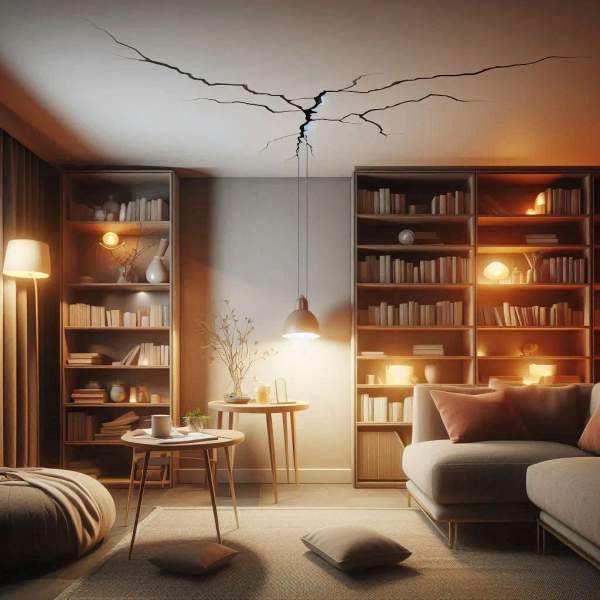Cracks in your ceiling can be more than just an eyesore—they might signal underlying issues with your home’s structure. Understanding what these cracks could mean is crucial for maintaining the safety and value of your property. As seasoned home inspection professionals, we know that a crack isn’t always just a crack. Here’s what you should know about ceiling cracks and why consulting a professional is often the best course of action.
Types of Ceiling Cracks
Not all ceiling cracks are created equal. Different types indicate different issues:
- Hairline Cracks: Often due to normal settling of the house, these are generally not a cause for alarm but should be monitored.
- Spiderweb Cracks: These can indicate foundational shifts, and while not immediately dangerous, they warrant further investigation.
- Large, Gaping Cracks: These may be a sign of structural damage and should be inspected by a professional immediately.
Potential Causes and What to Do
Ceiling cracks can stem from a variety of causes, each requiring different solutions:
- Foundation Settlement: As homes age, they naturally settle, which can lead to minor cracking. Regular inspections help monitor these changes.
- Moisture Damage: Water leaks from plumbing or the roof can weaken ceiling materials. Promptly repair leaks and assess for mold growth.
- Structural Issues: Poor construction or modifications can lead to serious structural problems. Consult a professional to evaluate and address these issues.
Industry standards recommend addressing any new or worsening cracks promptly. The American Society of Home Inspectors (ASHI) guidelines advise regular inspections to ensure cracks are not symptomatic of larger problems.
Conclusion
Ceiling cracks, while often benign, can indicate deeper issues that require attention. Regular inspections are crucial to maintaining your home’s integrity. For peace of mind and expert advice, consider scheduling a professional home inspection to assess and address any concerns. Your home deserves the best care to ensure its longevity and safety.

